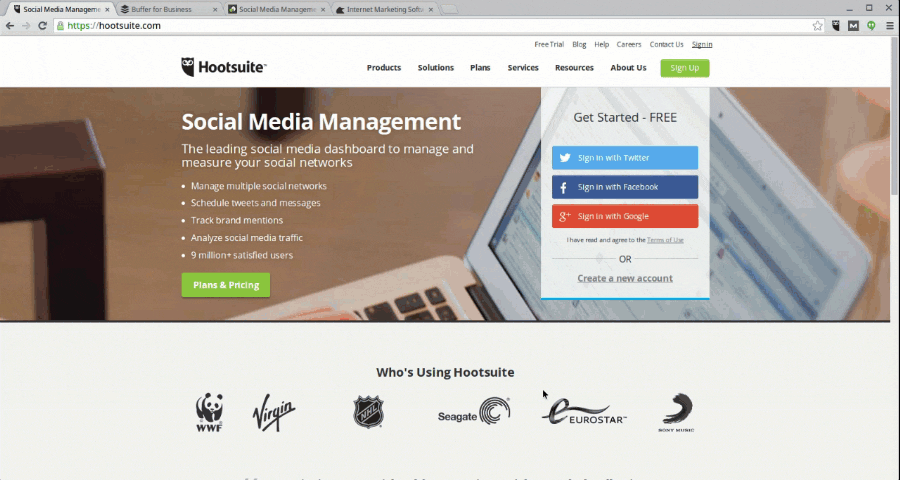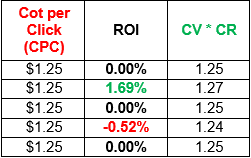In case you missed it (or #ICYMI for the more hashtag-inclined), we’ve compiled the best of the best moments from our recent digital marketing event, “Socialytics: Revealing the Value of Social Media.” DMG’s own Steve Groller and Jim Doherty took the stage at the Gallery Above Penn Square (GAPS) and discussed how to develop a comprehensive social media strategy, the role content marketing plays in a successful social media presence, and more, all in the pursuit of that elusive beast: true, bona fide business value.
The term “value” as it relates to social media is something that we’re going to focus on and it’s because while everyone seems to agree that social media is the platform, y’know, it’s the “thing” as far as that one-to-one connection, the stuff that everyone seems to go after from a marketing perspective. The value is something that’s a little more elusive. So when it comes to showing that value and translating that value from a business perspective, we’re going to look at it this way. We’re going to talk about starting with a strategy, so taking a tactical approach to social media, understanding where your positioning is now, where you hope to be, and how you’re going to get there. We’re going to talk about content, I’m going to talk about content, love that stuff. So, harnessing the power of that content and the power of the message associated with that content. Upon doing that, measuring with the data that matters, measuring what matters, what makes sense as far as your business goals and objectives via analytics. And finally, staying in a mindset where you’re constantly learning, constantly staying up to date, adapting to shifts and changes in that space. So, off we go.
So number one, start with a strategy. I’d like to talk a little bit first about what a strategy isn’t, because I think there are a lot of common misconceptions about what a strategy is and what it should encompass. A social media strategy is and what it should encompass. An effective social media strategy should not say “We’re going to launch our Facebook on this date,” “we’re going to start pushing content here,” and “we want 300 likes or 300 followers by the turn of the year.” That misses the point entirely. These follower metrics or these “likes” or these “favorites” or these “Retweets” are what we like to call vanity metrics. They’re called vanity metrics because they can be put in a pretty graph or they can be put on a bar graph or in a pie chart or wherever, and they can show incremental increases, but what do they actually mean? They’re easy to look pretty and they’re easy to display, but what do they actually mean?
A properly formed strategy ties tactics to business goals, and what we mean, well more specifically, your business goals and your overall objectives. While we talk a lot about competitive analysis and what your competitors are doing, the type of content that they’re disseminating vs. what you should be disseminating, you need to tie it back to your specific goals and objectives because they might be entirely different. A properly formed strategy also proves value with measures of success. How you define those measures of success and how you obtain that information is something we’re going to get into a little bit further in the presentation. And an effective strategy adapts and improves over time. The social media landscape changes constantly, almost too fast for a lot of us to keep up. But, the most important thing is taking that new information and taking those changes the platforms are making to themselves and to the measurement tools that analyze them, and writing those into your strategy.
Okay, next we’re going to talk about content. Excuse me if I get too giddy, but. I really do have a big appreciation for what I do as far as content goes, because the value of content and the value of social media, and the value of marketing essentially, are so closely tied. They’re so closely tied together. They go hand-in-hand. And the thing is, everybody in this room that works for a company, that brand has something about it that sets it apart from a competitor. So, there’s something that differentiates you. There’s something unique about that company. And you utilize content in such a way that you can tell that story and convey that message to a wide variety of audiences in a variety of different ways. In doing that, you develop this diverse content mix where the message is translated in various different ways and overall, the value is distributed among those audiences, y’know, their expectations are different, what appeals to them is different from, y’know a platform elsewhere. So, like I said, the avenues and the networks that we choose to push that information to, is not “parked.” It’s not “parked” content. Parking content, in other words, keeping a social media account active by having content constantly uploaded to it, is not the way to go. Because that practice of keeping those accounts open for the sake of keeping them open is predicated on this notion that that content has little to no value. And if the content doesn’t have value, then there’s something wrong with the story, or you’re not telling in the best way possible.
Now we’re going to get into a little bit of the numbers game. While I joke and say that it’s a numbers game, but as we’ve already said up here and we’ll probably say at least 20 more times before the presentation’s over, the numbers themselves don’t matter nearly as much as the context behind them. The chart here, which we made manually, it wasn’t derived automatically from one of these platforms, has two sets of data in it. One set of data is the amount of followers that a particular Twitter profile, a branded Twitter profile has over a 90 day period. The second set of data that’s in there is website traffic. That brand’s website from social media, so people go to these social media profiles and then their next move is to this company’s website. That’s what we’re talking about when we talk about bringing context to the situation, to the data. You can measure followers until you’re blue in the face, and say “We did well here, here, here and here.” But if you can’t relate that data back to another digital asset of yours, such as your website, and another source of your content, probably more content on your website, then that data is really meaningless.
So, we’ve reached the last point. So, that visual. Anybody here ever heard of iTunes Ping? The lack of hands does not surpri- you have, really? You’ve heard of it? Although the lack of hands does not surprise me. Basically, we’ve all heard of Apple. That was Apple’s go at a music-based social network back in 2010. Apple was probably not as popular as it is now, but certainly one of the most popular companies in the world in 2010, that’s when their iPhone 4 came out. And this network was created, and in less than 2 years they discontinued it. It failed. So, what I’m trying to say with that example is that this environment, this social media environment is changing. It’s turbulent. It’s unpredictable, but that is advantageous to brands in certain ways.
So throughout this environment, one quick tip is to rely on your most valuable asset, which I’ve talked about before, is your brand. We have had clients that are either in their transition, they’re transitioning to a new brand, they’re in the middle of a brand refresh, something of that nature, where the positioning is changing, the look and feel is changing, and not everybody’s on the same page. So those small problems, when you translate them to this, this environment that’s so hectic and so fast-paced, they get exponentially worse. So, when it comes to making these decisions about, “how are we going to translate the content we’re already creating to these new features that are coming out,” “which platforms are we going to pursue if new ones are coming up and other ones are dying out?” Your brand will dictate that. And as I’ve said before, in general, we’re talking about this turbulent environment is advantageous because it allows you to stay on your toes when it comes to updating processes, to updating strategies, to updating the tactics you’re doing, being fluid, being adaptive, looking at better data, more accurate data over time, and making better decisions.





